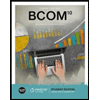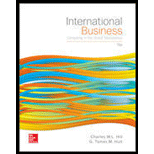
Case summary:
In the early days, Company A usually manufactures its products in their own backyard. In 2004, they have started to turn into a foreign manufacturing. They have shifted their manufacturing process to offshore. Ninety percent of the manufacturing was done in foreign countries. In the home country, they have kept almost 43,000 people to do the important tasks. Their in-house activities include marketing, product design, and software engineering.
Company A decided to assemble the smartphone in Country C, as the labor cost is lower in Country C when compared to Country U. The advantages of assembling in Country C is further discussed in the case.
To determine: The benefits and risks of outsourcing to Company A.
Explanation of Solution
Determine the benefits to Company A from outsourcing the assembly of a smartphone to Country C and the potential risks and benefits:
In most of the products of Company A, there will be a statement saying that the components of the product were manufactured in City C of Country U and it was assembled in Country C. Recent research state that Country U does not have enough workforce to assemble the products.
For assembling the products of the company, Country C approximately uses 230,000 people. Only 50 cities of Country U have more than 230,000 people as an overall population. Hence, they cannot survive in assembling the product. They will face the scarcity of labor. Hence, the mobiles of Company A are assembled in Country C.
The potential costs and risks of outsourcing to Company A are unexpected delays, miscommunications, complex production process, and mismatched parts.
Want to see more full solutions like this?
Chapter IC Solutions
International Business: Competing in the Global Marketplace
- Accurate answerarrow_forwardPlease explain this financial accounting problem with accurate financial standards.arrow_forwardAt the beginning of the recent period there were 1,020 units of product in a department, one-third completed. These units were finished and an additional 5,500 units were started and completed during the period. 840 units were still in process at the end of the period. One-fourth completed. Using the weighted-average valuation method the equivalent units produced by the department were: A. 6,730 units B. 6,680 units C. 7,360 units D. 6,390 Units E. 8,250 unitsarrow_forward
- What is the value of inventory listed on the firm's balance sheet?arrow_forwardI am looking for help with this general accounting question using proper accounting standards.arrow_forwardI need help finding the accurate solution to this financial accounting problem with valid procedures.arrow_forward
- How much gross profit was realised from this sale ?arrow_forwardMCQarrow_forwardA manufacturing company applies overhead based on direct labor hours. At the beginning of the year, it was estimated that overhead costs would be $460,000 and direct labor hours would be 91,000. Actual overhead costs incurred were $458,000 and actual direct labor hours were 96,000. What is the amount of overapplied or underapplied overhead at the end of the year? A. $16,000 overapplied B. $16,000 underapplied C. $26,800 overapplied D. $9,000 underappliedarrow_forward
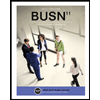 BUSN 11 Introduction to Business Student EditionBusinessISBN:9781337407137Author:KellyPublisher:Cengage Learning
BUSN 11 Introduction to Business Student EditionBusinessISBN:9781337407137Author:KellyPublisher:Cengage Learning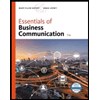 Essentials of Business Communication (MindTap Cou...BusinessISBN:9781337386494Author:Mary Ellen Guffey, Dana LoewyPublisher:Cengage Learning
Essentials of Business Communication (MindTap Cou...BusinessISBN:9781337386494Author:Mary Ellen Guffey, Dana LoewyPublisher:Cengage Learning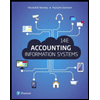 Accounting Information Systems (14th Edition)BusinessISBN:9780134474021Author:Marshall B. Romney, Paul J. SteinbartPublisher:PEARSON
Accounting Information Systems (14th Edition)BusinessISBN:9780134474021Author:Marshall B. Romney, Paul J. SteinbartPublisher:PEARSON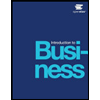
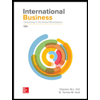 International Business: Competing in the Global M...BusinessISBN:9781259929441Author:Charles W. L. Hill Dr, G. Tomas M. HultPublisher:McGraw-Hill Education
International Business: Competing in the Global M...BusinessISBN:9781259929441Author:Charles W. L. Hill Dr, G. Tomas M. HultPublisher:McGraw-Hill Education